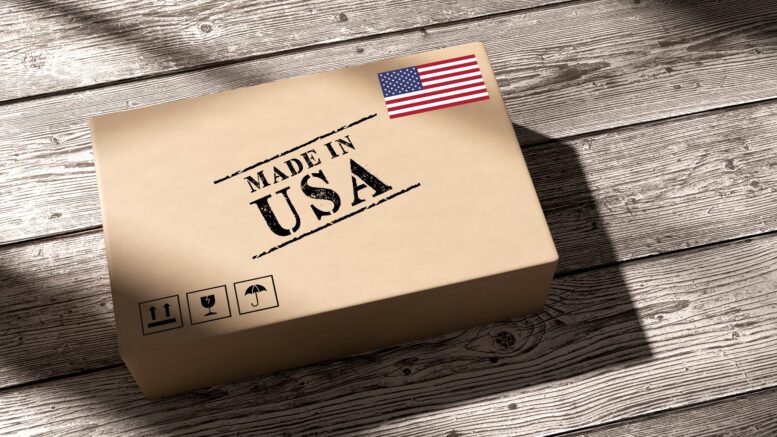Every year, companies find themselves in legal trouble for mislabeling products sold under U.S. government contracts. Sometimes it’s a result of misunderstanding compliance rules. In other cases, it’s intentional. Regardless of the reason, the outcome is often the same: lawsuits, lost contracts, and permanent reputational damage.
One of the most common and costly mistakes involves confusing the terms “Made in USA” and “Berry Compliant.” These are not interchangeable. If you’re supplying sewn goods or tactical gear for the Department of Defense, knowing the difference is essential.
This article explains what separates the two, how to verify compliance, and what can happen if you get it wrong. It also highlights a real-world case where a U.S. manufacturer was investigated for falsely claiming imported products met domestic sourcing standards. You can read about that case here.
What the Berry Amendment Is Really Designed to Do
The Berry Amendment (10 U.S.C. § 4862) requires that specific items like textiles, uniforms, body armor, and tactical gear purchased by the Department of Defense must be made entirely from materials sourced and manufactured within the United States.
The primary purpose of this requirement isn’t just to support American businesses. It exists to ensure that the U.S. retains a strong and ready industrial base in case of conflict or war. By mandating domestic sourcing, the Berry Amendment helps preserve essential manufacturing capabilities that would otherwise move offshore.
In times of emergency, we cannot rely on foreign-made goods to meet urgent military needs. Berry compliance is a matter of national security, not just supply chain preference.

“Made in USA” and Berry Compliant: Two Very Different Standards
Although both terms imply domestic production, they operate under entirely different criteria.
“Made in USA”
- Defined by the Federal Trade Commission (FTC)
- Means a product is “all or virtually all” made in the United States
- Allows for limited use of imported components if the final assembly is domestic
Berry Compliant
- Required by federal law for many DoD contracts
- Requires every component: thread, fabric, labels, fasteners, foam, and more, to be sourced and manufactured in the U.S.
- No imported content is permitted, regardless of where final assembly takes place
Put simply: “Made in USA” refers to where the product is built. Berry compliance refers to where every part of it comes from.
A Real-World Case of Mislabeling
Earlier this year, a U.S.-based defense contractor came under investigation after selling body armor labeled as U.S.-made. In reality, the ballistic plates were imported. The company had reportedly misrepresented the origin and safety certification of the gear, selling it to government buyers and law enforcement under false claims.
This resulted in a state-level lawsuit, federal involvement, and the possibility of criminal charges. The armor failed safety standards, and its origin was misrepresented on official documentation.
This isn’t an isolated incident. Companies that fail to meet sourcing requirements or falsely certify compliance can face contract cancellation, financial penalties, or federal prosecution. To see the full article, click here.
Five Questions to Ask Any Manufacturer about Berry Compliance
If you’re relying on a supplier to help you meet Berry requirements, don’t assume they’re compliant. Verify it. Here’s how:
- Where is every material sourced?
This includes fabric, thread, zippers, hook and loop, fasteners, foam, labels, and webbing. If even one item is imported, the product is not compliant. - Can you provide documentation for each material?
Certificates of Origin and compliance records are not optional. If they can’t show them, they likely don’t have them. - Do you have experience with Berry-compliant contracts?
Ask about prior work with DoD projects. An experienced manufacturer will have processes in place and know what to expect. - Can you trace your entire supply chain?
Full traceability is critical. If they can’t track each input back to a U.S. source, that’s a problem. - What process do you use to verify compliance internally?
Look for a formalized system, not verbal reassurances or assumptions.
If a supplier can’t confidently answer these questions, they are not ready to support a government contract.
The High Cost of Getting It Wrong
Government agencies don’t take false certifications lightly. Whether it’s due to negligence or intent, labeling non-compliant products as Berry compliant can result in:

- Loss of current contracts
- Disqualification from future bidding opportunities
- Fines and civil litigation
- Criminal investigations
- Long-term brand and reputational damage
Even small sourcing mistakes like imported thread or hardware can disqualify a product and expose your company to liability.
How Fieldtex Ensures Berry Compliance
At Fieldtex, we work with military and defense organizations that require strict compliance with federal sourcing laws. Our approach is grounded in decades of experience manufacturing sewn goods that meet military specifications and Berry requirements.
Here’s how we protect our partners:
- We source 100% of materials from vetted U.S. suppliers
- We maintain full supply chain traceability for every component
- We provide compliance documentation with each shipment
- We understand what auditors and contract officers are looking for, and we help our customers stay ahead of the curve
If compliance is a must, we’re a manufacturer you can trust to get it right.
Final Thoughts
The difference between “Made in USA” and “Berry Compliant” might seem like a technical detail. In reality, it’s the line between fulfilling a contract successfully and violating federal procurement law.
For businesses that serve the defense industry, compliance is not something to assume. It’s something to prove clearly, consistently, and with documentation.
Before you certify anything, verify everything.

